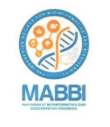The Effectiveness Of Bay Leaf (Syzygium polyanthum (Wight) Walp.) Extract As An Antifungal In Inhibiting THE Growth Of Trichophyton rubrum In Vitro
Abstract
ABSTRACT
Dermatophytosis is a common fungal infection in Indonesia which is mainly caused by Trichophyton rubrum. Since there is resistence and serious adverse effects of synthetic antifungal drugs then an alternative therapies with fewer side effect is needed. Bay leaf has a potential as a natural antifungal therapy because it contains tannins, flavonoids, terpenoids, saponins, steroids, phenolics, and alkaloids. This study aims to determine the effectiveness of bay leaf extract (Syzygium polyanthum (Wight) Walp.) as an antifungal therapy in inhibiting the growth of Trichophyton rubrum. This research is an in vitro experimental study with the posttest-only control group design. The well diffusion method was used to determine the antifungal activity in this study. Bay leaves were extracted using the maceration technique with 70% ethanol as solvent. Data were processed using the Kruskal-Wallis test and Post Hoc with Mann-Whitney. The concentrations of bay leaf extract used were 20%, 40%, 60%, 80%, and 100%. The average diameter of the inhibition zone of bay leaf extract against Trichophyton rubrum from the smallest to the largest concentration was 3,99 mm, 5,99 mm, 7,44 mm, 7,77 mm, and 8,83 mm. The statistical test results showed that there was a significant difference in effectiveness in all groups, except between the 60% and 80% concentrations. This study concludes that bay leaf extract (Syzygium polyanthum (Wight) Walp.) has effectiveness as an antifungal in inhibiting the growth of Trichophyton rubrum with weak to moderate inhibition and the most effective concentration is 60%.
Keywords: antifungal, bay leaf, dermatophytosis, Trichophyton rubrum
Full Text:
PDFDOI: https://doi.org/10.47007/ijobb.v7i3.203
Refbacks
- There are currently no refbacks.
| Indonesian Journal of Biotechnology and Biodiversity Published by: Publishing Department of Esa Unggul University Arjuna Utara No 9 Street Kebon Jeruk Jakarta - 11510 Indonesia | |








.png)

